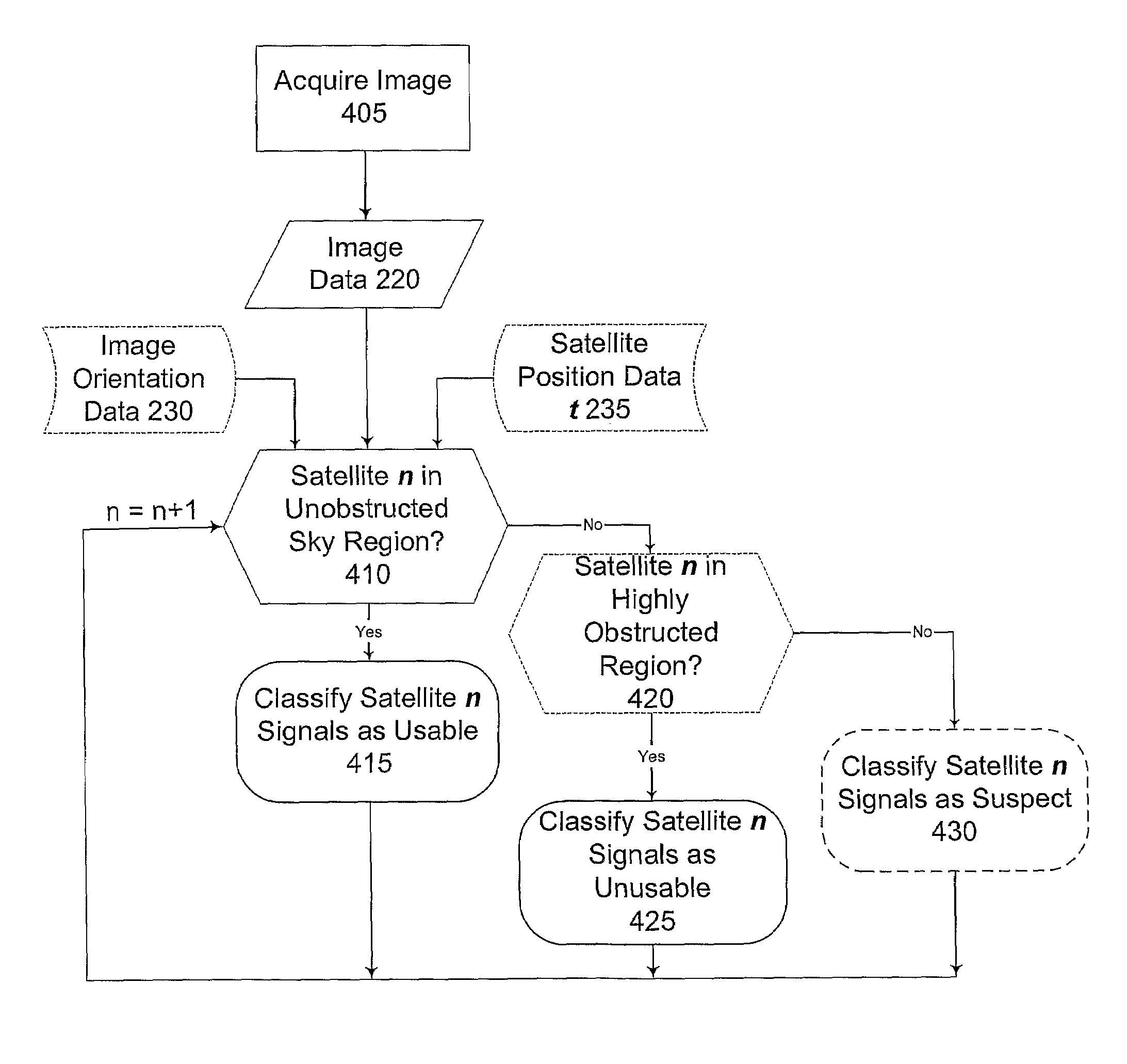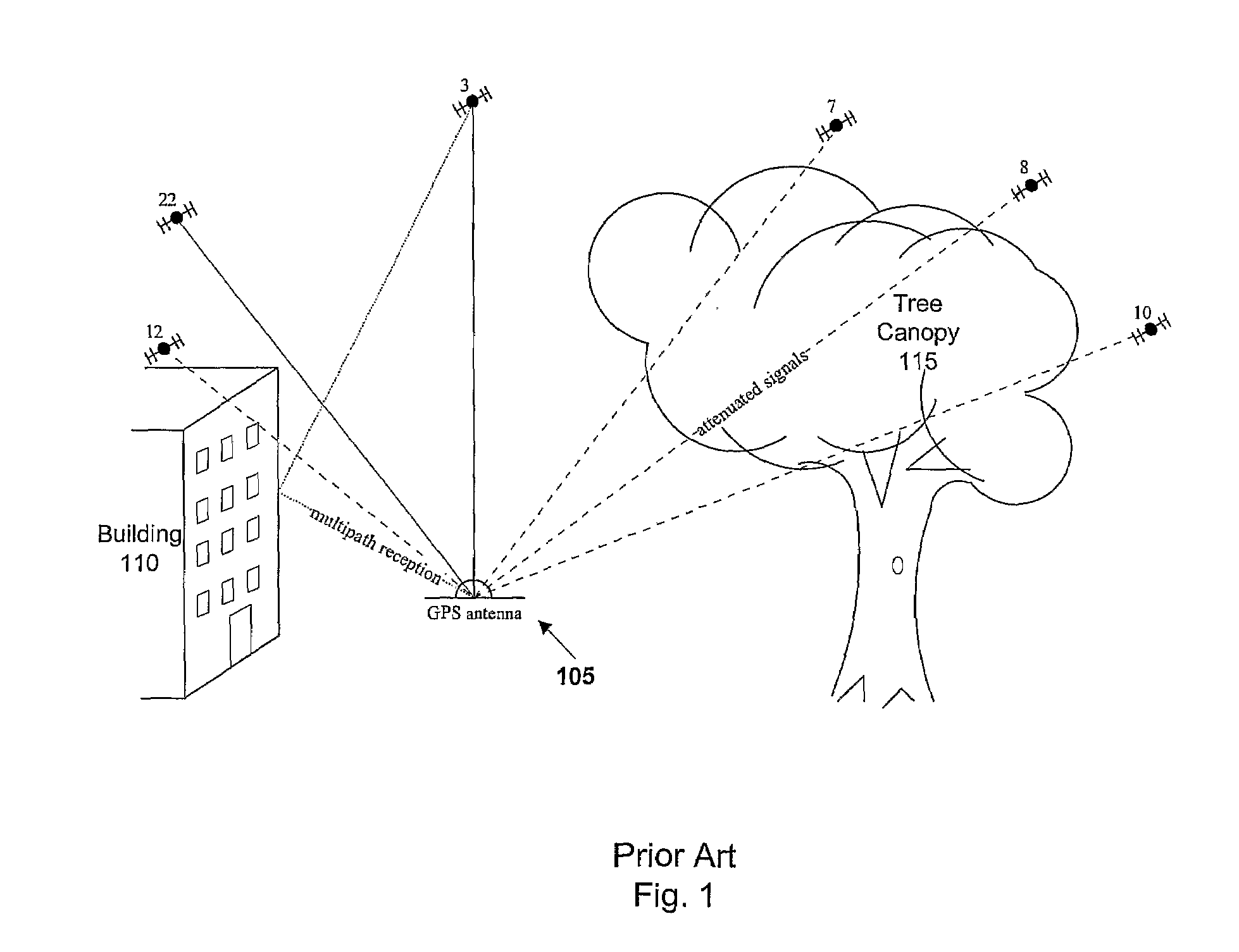Enhanced GNSS signal processing
a signal processing and enhanced technology, applied in the field of global navigation satellite systems, can solve the problems of signal refraction and multipath reception at the antenna, degrade the accuracy of gnss fixes, and signal distortion
- Summary
- Abstract
- Description
- Claims
- Application Information
AI Technical Summary
Benefits of technology
Problems solved by technology
Method used
Image
Examples
Embodiment Construction
[0024]The following terms are intended to have the meanings indicated, unless otherwise indicated by the context:
[0025]GALILEO comprises the Galileo satellite navigation system planned for deployment by the European Space Agency.
[0026]GLONASS comprises the Glonass satellite navigation system currently operated by the Russian Federation Ministry of Defense.
[0027]GNSS (Global Navigation Satellite System) comprises generically the GPS, GLONASS and GALILEO systems, similar satellite-based navigation systems which may from time to time become operational, and pseudolite systems.
[0028]GPS comprises the NAVSTAR Global Positioning System deployed by the United States Department of Defense, as it currently exists and as it may exist with future modernization.
[0029]A pseudolite, also called a pseudo-satellite, is a transmitter of GNSS-like signals. A pseudolite is typically terrestrial.
[0030]A satellite is a transmitter of GNSS signals, and is intended to include a pseudolite.
[0031]FIG. 2 sch...
PUM
 Login to View More
Login to View More Abstract
Description
Claims
Application Information
 Login to View More
Login to View More - R&D
- Intellectual Property
- Life Sciences
- Materials
- Tech Scout
- Unparalleled Data Quality
- Higher Quality Content
- 60% Fewer Hallucinations
Browse by: Latest US Patents, China's latest patents, Technical Efficacy Thesaurus, Application Domain, Technology Topic, Popular Technical Reports.
© 2025 PatSnap. All rights reserved.Legal|Privacy policy|Modern Slavery Act Transparency Statement|Sitemap|About US| Contact US: help@patsnap.com



